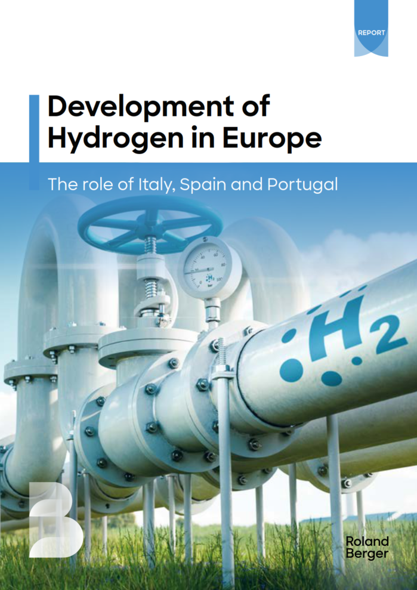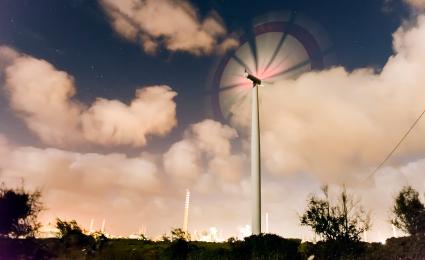In our fifth podcast episode, we delve into the dynamic world of hydrogen, an important molecule for our pursuit of decarbonization.


Development of hydrogen in Southern Europe
How Italy, Spain and Portugal can lead the way in the development of the Hydrogen transition and connect to external markets
Italy's industrial north and solar-rich south, coupled with its proximity to Africa, make it a key hydrogen hub for production and consumption in Central and Northern Europe. In contrast, Spain and Portugal who boast robust levels of solar irradiation and relatively strong winds, are expected to produce green hydrogen more cheaply. Crucial synergy among European nations is key for an optimized strategy that aligns individual efforts with the collective aim of a sustainable European hydrogen market.
_image_caption_none.jpg)
The context for European Hydrogen
Hydrogen serves as both a raw material in combustion and chemical processes and an energy carrier for storage and transport (e.g., as liquified hydrogen, ammonia, methanol). Its complex value chain significantly influences a large segment of the European economy.
The majority of renewable hydrogen demand is anticipated to center around Central and Northern European nations, with Germany at the forefront. However, these areas, despite their significant demand, face production constraints due to their limited renewable energy resources, which fall short of the levels needed for extensive renewable hydrogen production.
This is the reason for which a large share of net import is expected into the EU.
_image_caption_none.png)
Hydrogen imports into the European Union would become possible through dedicated pipelines and ship routes. These would serve as facilitators that enable primary import into the European Union, and secondary distribution across geographical regions via the creation of a necessary capillary infrastructural network as production and import capacity increases beyond the timeline to 2030 when results are expected to become more concrete.
Currently, the two primary methods of interest through which hydrogen can be transported are through pipelines (cost-effective for large volumes) requiring dedicated infrastructural expansion and as ammonia, via conversion, which facilitates the liquefaction and transportation process due to ammonia's higher boiling point. At the destination, ammonia can be used directly as a fuel or cracked to release hydrogen. This method is gaining interest because existing infrastructure for ammonia can potentially be leveraged.
To support the development of European import, the European Hydrogen Backbone is being developed which currently envisions Europe realizing a potential of almost 40,000 km of infrastructure by 2040.

It is clear however, that all countries must proceed in optimal unity with the aim of achieving a coherent and optimized European strategy that is credibly grounded.
Italy, Spain and Portugal as key players in the Hydrogen landscape
Italy, Spain and Portugal, due to climate peculiarities and geographical location, are characterized by good production potential, which combined with a natural inclination to act as a bridge to external geographical areas position them as key players for the development of the European hydrogen economy.
Italy's South H2 Corridor project, a 3,300 km hydrogen pipeline, aims to transport renewable hydrogen from North Africa to Europe, with Italy set to utilize about 1 million tons. Italy's industrial prowess positions it well in the hydrogen value chain, with leadership in manufacturing, operations, and distribution, offering a significant boost to the economy.
Meanwhile, Spain and Portugal are emerging as key players in green hydrogen production, leveraging abundant solar and wind resources. Spain's developed infrastructure and comprehensive national strategy support its growth, while Portugal's focus on low-cost production and ambitious pipeline network aims to make it a major exporter, albeit with challenges requiring coordinated efforts for realization.
The hydrogen horizon: a closer look at southern Europe’s energy potential
Europe's renewable hydrogen future is a collection of national initiatives, each using their distinct industrial, economic, and geopolitical advantages. Italy, Spain, and Portugal have the potential to play a key role in this scenario, but this requires a coordinated and sustainable strategy at both national and European levels.
Significant investments are needed to boost demand and production, as well as to build a hydrogen-ready infrastructure, covering everything from distribution pipelines to import hubs and storage facilities.
The routes, opportunities, and alternatives ahead of us are numerous, and we can make some forecasts about the future of hydrogen in Southern Europe, with implications for the whole continent. How will the elements we've discussed change and affect the future? What hurdles need to be overcome to achieve our ultimate goals? What projections can we make from the elements presented?
Read the full report to discover the strategic actions that could shape the hydrogen economy of Southern Europe.
Register now to access the full study, to discover the hydrogen transition in Italy, Spain and Portugal.





_person_320.png)



_person_320-2.png)

